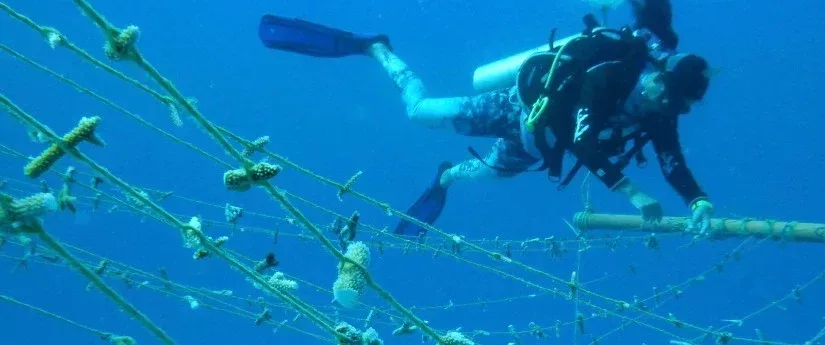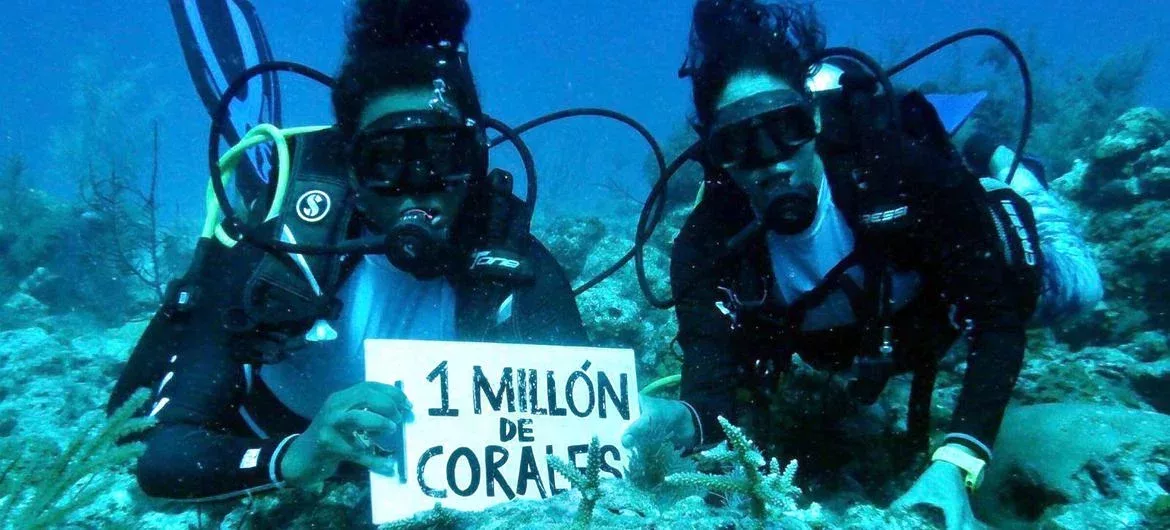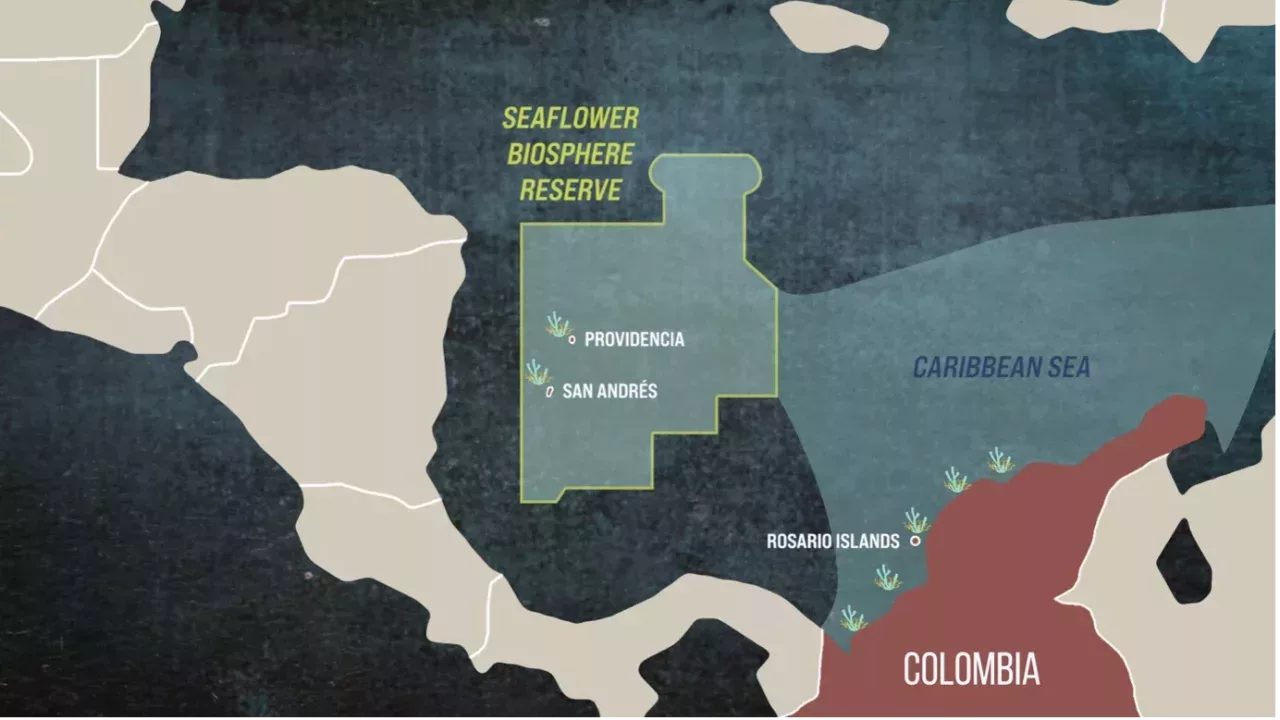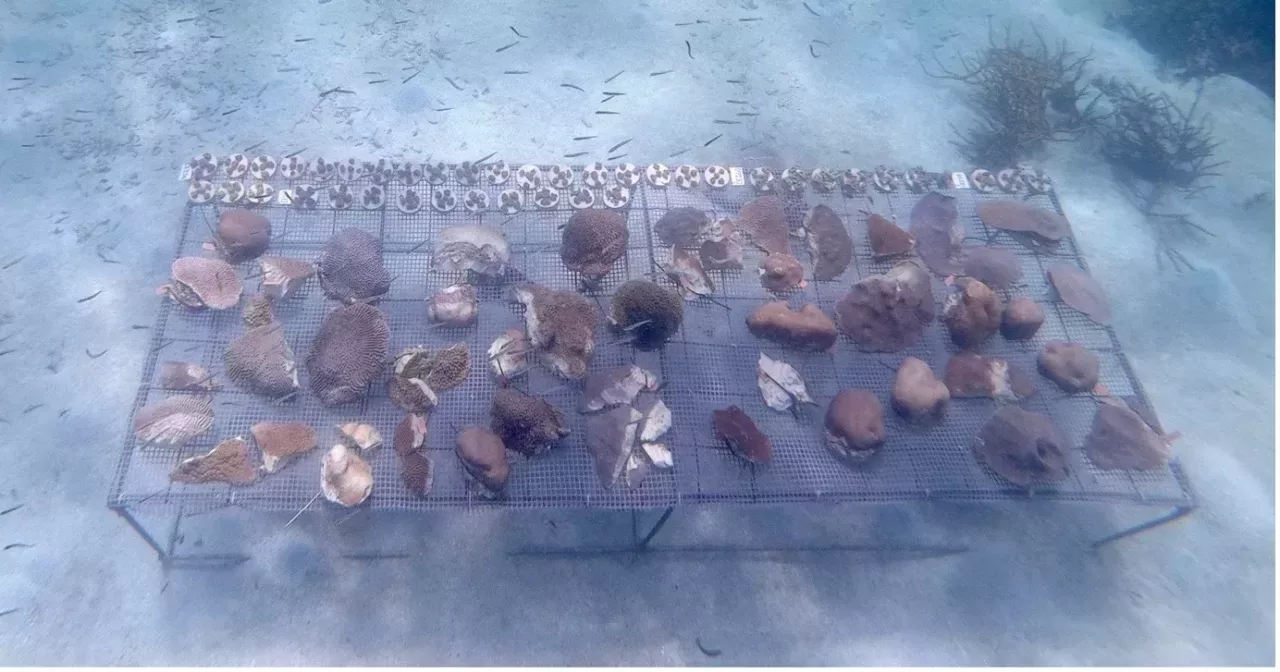In 2021, the Colombian government launched ‘One Million Corals for Colombia’, a nationwide coral restoration effort in the context of the UN Decade on Ecosystem Restoration.
Photo credit: Colombian Environment Ministry and UN News.
Aiming to grow one million fragments of coral and restore 200 hectares of reefs by 2023, it is a much more extensive enterprise than previously attempted in the region and the largest effort in the Americas to date.
A video introducing the project in Spanish, by the Colombian Environment Ministry, is also available here.
Restoration is undergoing along the Pacific and Caribbean coasts of Colombia. The targeted areas for restoration are contained within protected areas of the country, namely the Seaflower UNESCO Biosphere Reserve, an oceanic archipelago that is noted for its significant ecological and biological significance, and the Corales del Rosario and San Bernardo National Park. The Caribbean region has experienced declines in coral cover caused by overfishing, pollution, and climate change.
Through collaborative efforts with a wide range of partners, including restoration experts and local communities, the initiative will use micro-fragmentation coupled with a strong engagement plan to build technical capacities of local communities.
Adapted from articles by the Colombian Ministry of Environment and UN News.
Restoration can be defined as “the process of assisting the recovery of an ecosystem that has been degraded, damaged, or destroyed”, according to the Society for Ecological Restoration International Science & Policy Working Group.
Learn more about restoration for coral reefs and related ecosystems at ICRI’s restoration hub.





